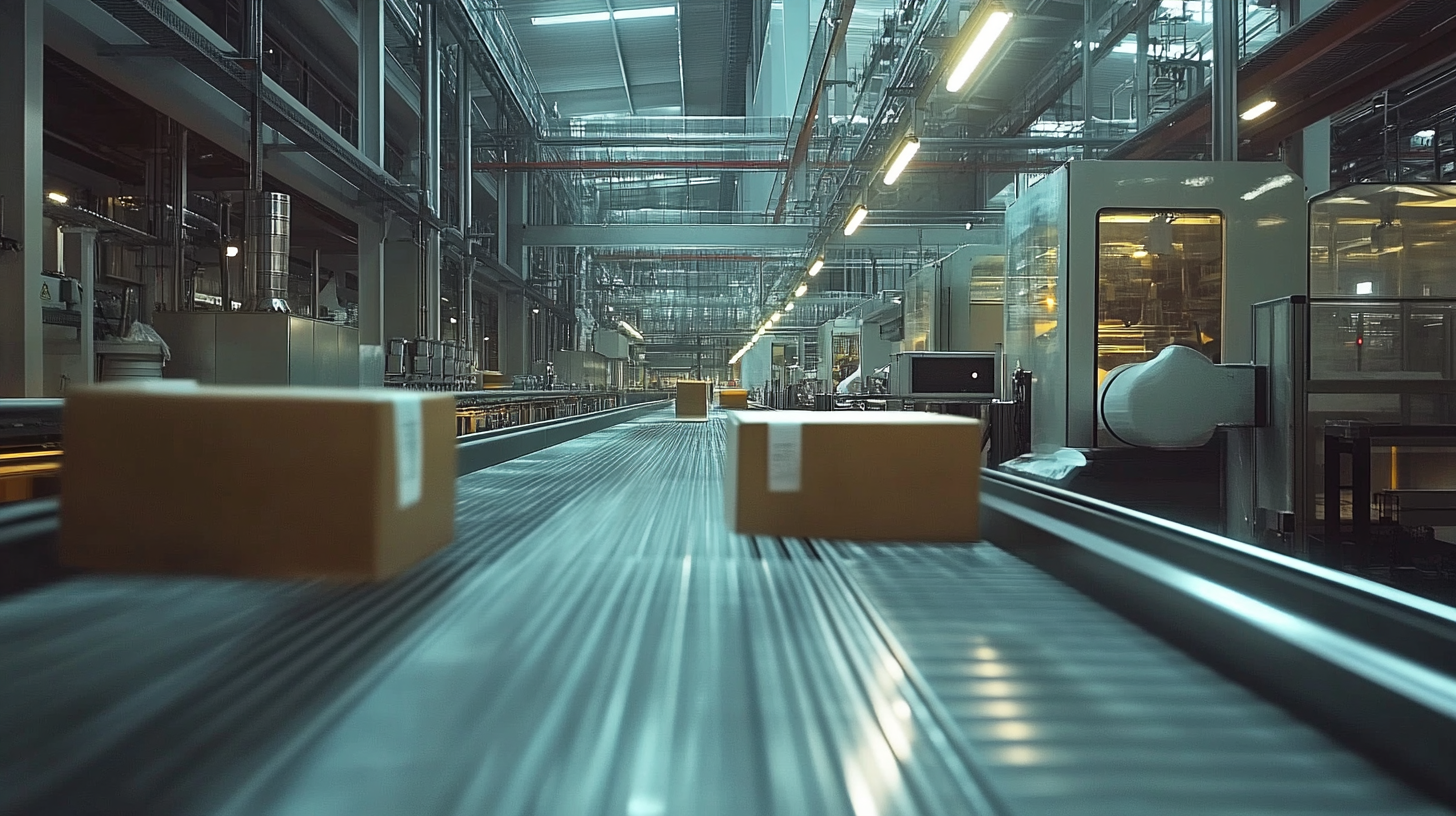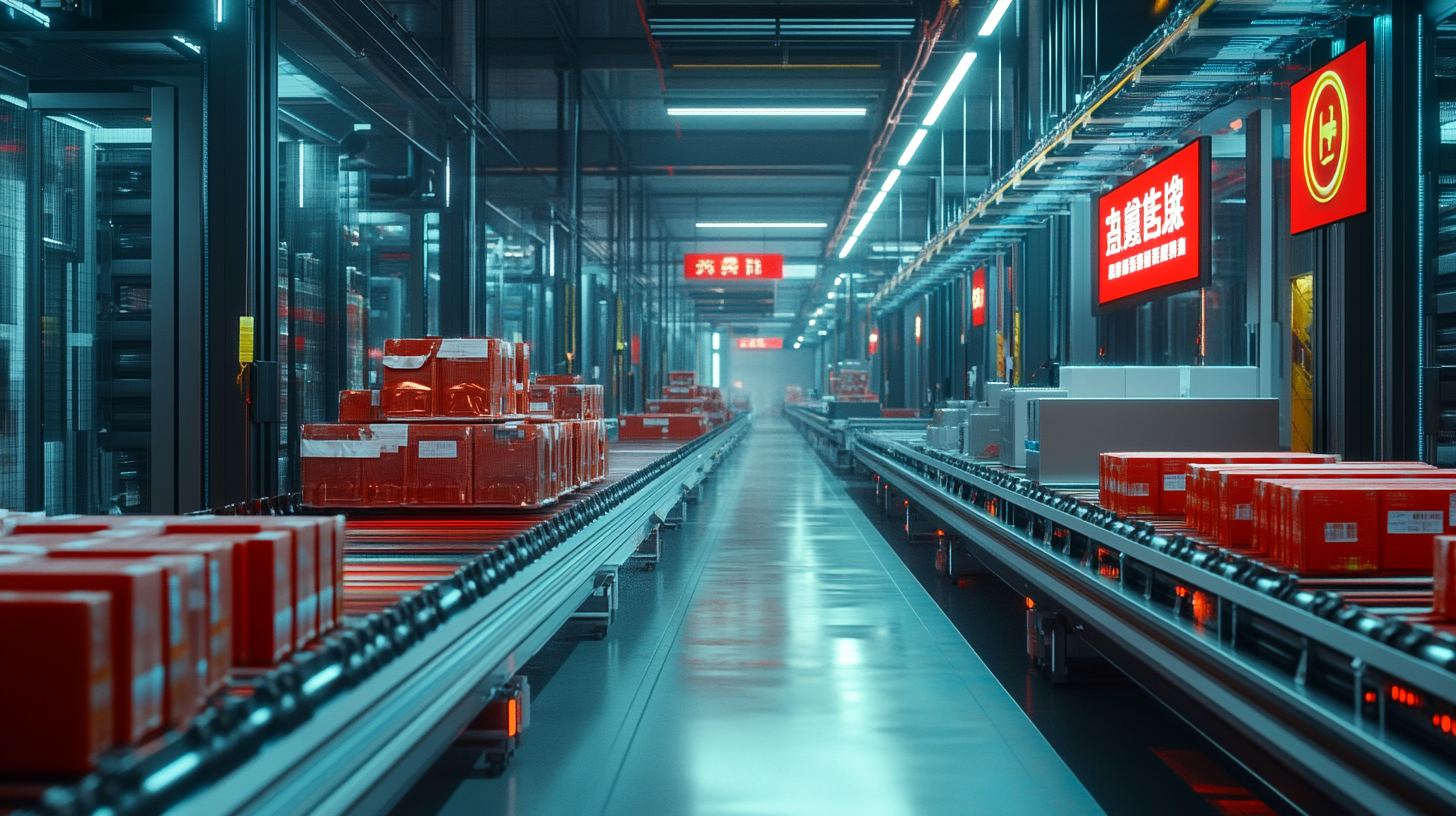7 Essential Insights for Global Buyers of Industrial Packaging Machines
In today's fast-paced global marketplace, the demand for efficient and reliable Industrial Packaging Machines has never been higher. As businesses strive to streamline their operations and enhance productivity, selecting the right packaging equipment plays a crucial role in maintaining competitiveness and meeting customer expectations. With advancements in technology and increasing market complexity, navigating through the myriad of options can be daunting for buyers. This blog aims to provide valuable insights that will assist global buyers in making informed decisions regarding their industrial packaging needs.
Understanding the key factors that influence the purchase of Industrial Packaging Machines is essential for maximizing investment value and ensuring operational efficiency. From assessing the latest technological innovations to evaluating vendor reliability, prospective buyers must consider various elements before committing to a purchase. In the subsequent sections, we will delve into seven essential insights that can guide global buyers through this critical decision-making process, enabling them to choose the right equipment that aligns with their specific requirements and future growth plans.

Understanding the Diverse Types of Industrial Packaging Machines
When considering industrial packaging machines, it is essential to understand the diverse types available to global buyers. The packaging machinery market is expected to reach approximately $52 billion by 2026, growing at a CAGR of around 5.0% from 2021. This growth highlights the increasing demand for efficient, cost-effective, and flexible packaging solutions across various industries. Industrial packaging machines can be categorized into several types, each serving distinct purposes. For instance, filling machines are crucial for high-speed production lines and are designed to fill products into containers accurately. According to a report by MarketsandMarkets, the filling machine segment is anticipated to grow significantly, driven by the rising demand for liquid products, particularly in the food and beverage sector. Moreover, labeling machines are also pivotal in today's packaging landscape. As consumer awareness regarding product information and safety increases, the need for efficient labeling solutions has surged. The labeling machines market is projected to witness a growth rate of about 6.3% annually through 2025, fueled by the proliferation of e-commerce and retail industries that require high-quality, visually appealing packaging. Additionally, automation in packaging systems is transforming the industry. Advanced technologies such as robotics and IoT integration are becoming standard, enhancing efficiency and reducing operational costs. A study by ResearchAndMarkets indicates that the global automation in packaging sector will reach $30 billion by 2027, with a focus on smart packaging solutions that cater to consumer demands for sustainability and product traceability. Understanding these diverse types of industrial packaging machines is crucial for global buyers aiming to optimize their operations and meet market demands effectively.

Key Factors to Consider When Choosing Packaging Equipment
When selecting industrial packaging equipment, global buyers must consider several key factors that influence both operational efficiency and cost-effectiveness. The packaging machinery market is experiencing significant growth, with projections indicating an increase from $23.57 billion in 2025 to $34.62 billion by 2032, representing a compound annual growth rate of 5.6%. This rise underscores the importance of making informed decisions when investing in packaging solutions.
One critical factor is the adaptability of the equipment to various packaging requirements. With the diversification of products ranging from food and beverages to pharmaceuticals and cosmetics, buyers should seek machinery that can handle multiple materials and package styles. Flexibility in design allows manufacturers to respond swiftly to market demands and changing regulatory environments, which is especially crucial in volatile markets or regions with strict compliance standards.
Additionally, the integration of innovative technologies, such as automation and smart packaging features, can significantly enhance productivity and reduce waste. By leveraging advancements in packaging techniques, companies can streamline operations and improve the overall sustainability of their processes. Furthermore, collaboration with technology-sharing platforms can facilitate knowledge exchange and innovation within the industry, ultimately contributing to better outcomes for manufacturers and consumers alike.
In conclusion, making an informed choice in industrial packaging machinery involves thorough consideration of adaptability, technology integration, and collaboration opportunities. As the market continues to grow and evolve, staying ahead of trends and capabilities will be paramount for global buyers seeking success in a competitive landscape.

The Importance of Supplier Reputation and Reliability
In the landscape of global industrial packaging, the significance of supplier reputation and reliability cannot be overstated. As the market for battery management systems is projected to soar to $15 billion by 2033, companies are increasingly prioritizing trusted suppliers. A reliable supplier not only assures consistent quality but also mitigates risks associated with production delays and supply chain disruptions, especially in a rapidly evolving industry like electronics and packaging.
The recent accolades received by prominent companies for their strategic supplier relationships emphasize the vital role of reputation in decision-making. Buyers should seek suppliers with a proven track record, particularly those recognized for their innovative solutions and dependability. These attributes are essential as manufacturers face uncertainties arising from geopolitical tensions and trade policies that can significantly disrupt operations.
Moreover, a supplier’s commitment to quality control and compliance with international standards further bolsters buyer confidence. In an environment where customer satisfaction is directly tied to reliable packaging solutions, it becomes imperative for global buyers to thoroughly vet their suppliers. By focusing on the reputation and reliability of suppliers, businesses can ensure they are not just investing in machinery, but also in a partnership that fosters growth and operational excellence in the long term.

Emerging Trends in Industrial Packaging Technology
Emerging trends in industrial packaging technology are reshaping the landscape for global buyers, driving innovation and efficiency in packaging solutions. One of the most significant trends is the integration of automation and IoT (Internet of Things) technologies into packaging machines. According to a report by ResearchAndMarkets, the global automated packaging market is expected to grow from USD 70 billion in 2021 to USD 100 billion by 2026, reflecting a compound annual growth rate (CAGR) of 7.3%. This shift towards intelligent packaging not only enhances operational efficiency but also enables real-time monitoring of packaging processes, reducing downtime and wastage.
Another key trend is the increasing demand for sustainable packaging solutions. As consumers become more environmentally conscious, manufacturers are responding by adopting eco-friendly materials and processes. A recent study by Smithers Pira indicates that the sustainable packaging market is projected to reach USD 500 billion by 2023, growing at a CAGR of 5.7%. This shift involves innovative materials such as biodegradable plastics and recycled paper, which align with global sustainability goals while meeting the rigorous standards of the packaging industry.
Moreover, customization and flexibility are becoming vital components of industrial packaging technology. As manufacturers pursue more personalized approaches to meet diverse consumer needs, packaging machines are evolving to accommodate custom shapes, sizes, and designs. A report by Mordor Intelligence reveals that the market for flexible packaging is expected to grow by 4.2% annually and reach USD 300 billion by 2026. This adaptability not only enhances brand identity but also optimizes space and reduces material costs, making it an essential feature for buyers of industrial packaging machines.
Cost-Benefit Analysis: Balancing Price and Quality in Purchases
When it comes to acquiring industrial packaging machines, global buyers face the critical task of balancing cost with quality. A comprehensive cost-benefit analysis is essential for making informed purchasing decisions that can significantly impact a company’s bottom line. According to a report by MarketsandMarkets, the global industrial packaging market is projected to grow from $65 billion in 2022 to $88 billion by 2027, highlighting the increasing demand and thereby emphasizing the importance of extracting value from investments in packaging solutions.
Quality is a significant factor that can influence the longevity and efficiency of packaging machines. A high-quality machine may come with a higher upfront cost; however, its durability can lead to reduced maintenance expenses and lower downtime. According to an industry report from Grand View Research, high-performance packaging machinery can improve production efficiency by up to 30%, thus mitigating the initial investment cost over time. This underlines the necessity for buyers to weigh the long-term savings associated with quality against the immediate savings of cheaper alternatives.
Moreover, the volatility of raw material prices and the global supply chain disruptions experienced in recent years also accentuate the need for purchasers to consider the total cost of ownership (TCO). A TCO analysis includes not only the purchase price but also operating expenses, maintenance costs, and eventual disposal or upgrade costs. According to a study by the Packaging Machinery Manufacturers Institute (PMMI), an investment in more sophisticated machinery that integrates automation can yield productivity gains of up to 40%, surpassing the perceived financial constraints when opting for less expensive, lower-quality machines.

